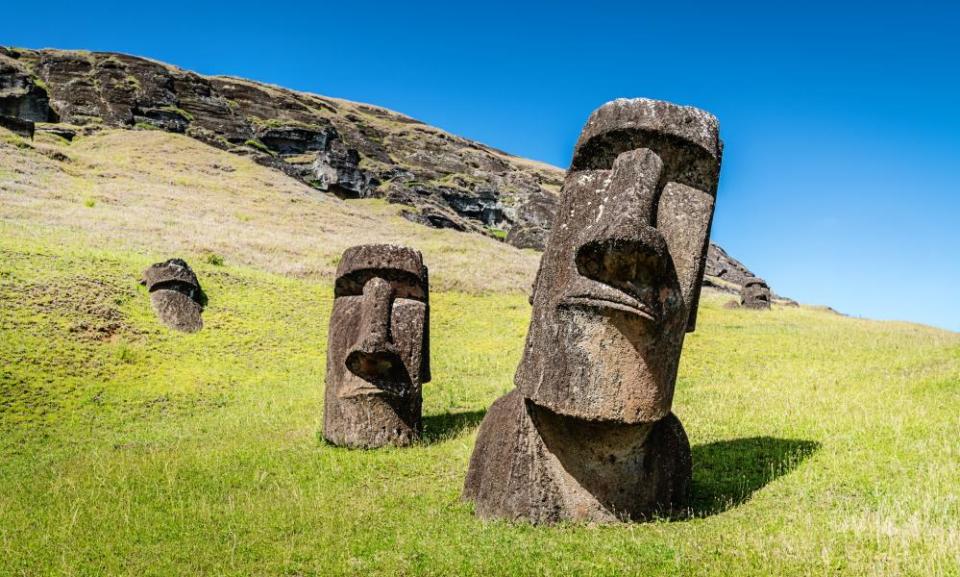Undreamed Shores by Frances Larson review – the heroines of British anthropology

When Maria Czaplicka first encountered the indigenous hunters and herders of northern Siberia it wasn’t clear who was doing anthropology on whom. The Oxford-based scholar had spent much of 1914 sledging over the Arctic steppes to reach the Evenks in order to ask them about their kinship structures, marriage customs and the right way to eat a reindeer. They in turn wanted to know which tundra she had come from and how she made a living without any fox skins to trade. And why did such a young person have such old hair (her blondness struck them as the grey of middle age), and then, the question that women still get: where were her children? The queries that hurtled back and forth were fearless but fertile and produced the rich data that Czaplicka marshalled so brilliantly in My Siberian Year (1916), the hit book that she published on her return to Britain.
It sounds as though Czaplicka was poised for success, if not celebrity. And yet, as Frances Larson explains in this enthralling group biography, the first generation of professional female anthropologists faced far more prejudice back home than they ever did out in the field. Funding, career progression, access to academic publishing (My Siberian Year was actually brought out by Mills & Boon) all remained tantalisingly out of reach. While it’s true that in 1916 Czaplicka was appointed Oxford’s first female lecturer in anthropology, it was made clear that she was to keep the post warm until the right man came home from the war. Obliged to move to Bristol University , the final straw came in 1921 when the Polish-born scholar failed to win a fellowship that would have allowed her to return to Siberia. Exhausted after years of begging and scraping together money for her field work, the 36-year-old downed five fatal pills of mercuric chloride.
This story isn’t even the saddest of the five that Larson brings us here. Ironically the invisibility and marginality that made Czaplicka’s contemporaries Katherine Routledge, Winifred Blackman, Beatrice Blackwood and Barbara Freire-Marreco such good observers of other peoples’ culture hobbled them when it came to making a mark in their own. It wasn’t just a case of not getting the jobs that were earmarked for men, but something more subtle and therefore harder to contest.
When Blackwood set off for the Solomon Islands in the 1920s determined to find a Stone Age community in which to immerse herself, the man in charge, Australian anthropologist Ernest Chinnery, consistently assigned her settlements that were within hailing distance of the local police station. He was obsessed with the idea of European women getting raped by local men, even if there was no record of it ever happening.
Breaking away to travel to the edge of the Highlands, Blackwood found a culture that had already been hopelessly muddled by colonial interventions: the Anga tribe used imported metal tools, paid attention to the local Lutheran mission, and grew newly introduced cash crops to sell to gold miners from Australia. It was a mishmash about which Blackwood despaired of ever finding anything coherent to say. She ended her career as the chief cataloguer at the Pitt Rivers Museum, much-loved and hugely valued, yet when her colleagues lobbied for Oxford to award her an honorary doctorate, she was passed over.
Even when the money was sorted it didn’t mean that a female fieldworker felt free to do and speak as she pleased. Routledge was rich enough to fund her own work on Easter Island, kitting out a boat to get there and a scientific team to support her. But once on shore she found herself prey to uncharacteristic self-doubt. The indigenous people told her that the monumental moai statues that guard the shoreline had “walked” there from the inland quarry where they had been made. But this sounded so fanciful that Routledge refrained from making too much of it for fear of appearing credulous. It took the ceaselessly self-confident Norwegian ethnographer Thor Heyerdahl another 60 years to work out that the statues were built with such a low centre of gravity that it was indeed quite possible that they had “walked” there, with the islanders rocking and twisting them forward, much as you might move a heavy fridge.
Routledge finished her days in a mental asylum, as did Blackman who worked in the Nile valley in the 1920s. Larson is too sensible to suggest that it was anthropology that sent them over the edge, but she is clear-eyed about the collateral damage they accrued along the way. All five women had to put up with some truly ghastly men, including needy fathers, patronising brothers, rapacious husbands and lovers who would secretly have been happy to see them fail. While there were one or two male patrons who deserve an honourable mention – Robert Marett, who taught several of the women anthropology at Oxford, comes to mind – even they made sure that the biggest share of everything went to the men, a cultural practice that seemed so self-evidently natural that it didn’t cross their minds to see if it could be changed.
• Undreamed Shores: The Hidden Heroines of British Anthropology by Frances Larson is published by Granta (£20).

 Yahoo Finance
Yahoo Finance 